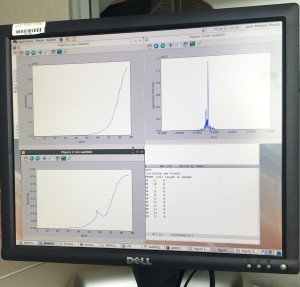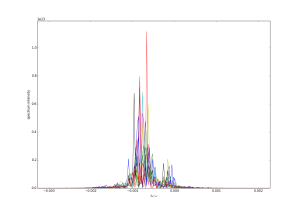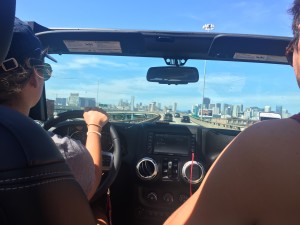This week I finally got the beam simulation up and running! I’ve started modeling the improvements in X-ray coherence and power between the new iSASE magnet configuration and the old SASE configuration.
It was a bit of a struggle to get the simulation program running. It’s called Genesis 1.3 and it runs on one of SLAC’s central computer cores, so my computer just acts as a terminal to submit jobs to it. But when I would try to do that, it kept returning tons of error messages saying that basically every part of the program failed to run for one reason or another. Both Tor and Juhao tried to help figure out what was going on but neither made any progress. After a few frustrating days of trying to debug it by running the simplest possible beam and installing other pieces of code, Kun Fang, another member of Juhao’s team, got it to run. It turned out that there was a certain directory that Genesis was supposed to run on that I had to get permission to access. Once it was working smoothly, I started sending in jobs to model the differences in X-ray bandwidth and power between the SASE and iSASE lattice layouts.
Running the Genesis program is a lot like doing experiments on the real beam except that the data comes in a lot slower. It has to simulate a beam with over one billion electrons in each bunch and model the beam’s interactions with elements such as Rf cavities, focusing magnets, bending magnets, chicanes, and undulators, ending up with output data in the same format as the sensors in the real accelerator. This requires a lot of computation for each bunch. And in the real beam, each bunch has a different random distribution so each model needs to be run many times with different random bunches to see if the changes in the magnets make any real difference. The computer can do one bunch about every 5 minutes while the real accelerator sends 120 bunches per second.
On Friday night (8/7) this week, Juhao’s team has an experiment shift using the LCLS beam. Before we run the experiments on the real beam, I need to model what the data might look like so when we have it we can have an idea of what it means. I’m super excited for the experiment, even though the time slot we have is from 10 pm to 3 am.
Also, the Gershenbergs, the family I’m staying with, got back from their trip to Italy. I went into San Francisco with Marcus and a few of his friends and had what might be the best ice cream I’ve ever had. I’ve also been climbing with Tor at the Planet Granite gym a lot. I’m starting to like overhanging routes and taking lead falls.
All in all, everything is going great and I can’t wait for the experiment next week.




There are no comments published yet.